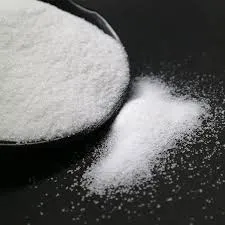Chemical Treatment for Water Purification
Water is essential for life, and ensuring its cleanliness is crucial for public health and environmental sustainability. As populations grow and industrialization accelerates, the demand for clean water increases, necessitating effective treatment methods. Chemical treatment is one of the most widely used methods for purifying water, involving various chemicals to remove contaminants and make water safe for consumption.
Overview of Chemical Treatments
Chemical treatment for water purification involves the addition of specific chemicals to water sources to eliminate impurities. These chemicals can help in coagulation, flocculation, disinfection, and the removal of undesirable substances like heavy metals, organic compounds, and pathogens. Some of the most commonly used chemicals in this treatment process include chlorine, alum (aluminum sulfate), ozone, and lime.
1. Coagulation and Flocculation The first step in many chemical treatment processes involves coagulation and flocculation. In this stage, coagulants like alum are added to the water. They work by neutralizing the charges of suspended particles, which helps them to clump together, forming larger aggregates called flocs. This process is crucial because smaller particles are difficult to remove through sedimentation. Once flocs are formed, the water goes through a flocculation stage, where gentle mixing promotes further aggregation of these particles, facilitating their subsequent removal.
2. Sedimentation After coagulation and flocculation, the water is allowed to sit in a sedimentation tank. Here, gravity helps settle the flocs to the bottom, forming a sludge layer. This sedimentation process significantly reduces the turbidity of the water, making it clearer and easier to treat further.
3. Filtration Following sedimentation, filtration is employed. The water is passed through filters, often made of sand, gravel, or activated carbon, which capture any remaining particles and impurities. Activated carbon filters are particularly effective at removing organic compounds, taste, and odor, making the water more palatable.
4. Disinfection One of the most critical stages in chemical water treatment is disinfection. This step is essential for eliminating pathogens such as bacteria, viruses, and protozoa that can pose serious health risks. Chlorine is the most widely used disinfectant due to its effectiveness and cost-efficiency. However, alternative methods like ozonation and ultraviolet (UV) treatment are gaining popularity. Ozone is a powerful oxidant that can eliminate a wide range of pathogens, and UV treatment uses radiation to destroy microorganisms without the need for chemicals.
chemical treatment for water purification

5. pH Adjustment The pH level of water can affect the solubility and mobility of contaminants. Sometimes, lime is added to raise the pH, which can help precipitate heavy metals like lead and copper. Proper pH balance is instrumental in achieving effective coagulation and disinfection.
Advantages of Chemical Treatment
The chemical treatment of water presents several advantages. Firstly, it is highly efficient in removing a variety of contaminants, making it suitable for both municipal and industrial applications. Secondly, chemical treatments can be tailored according to the specific impurities present in the water, allowing for customizable solutions. Moreover, many chemical treatment processes are relatively quick, enabling the production of large volumes of treated water in a short timeframe.
Challenges and Considerations
Despite its effectiveness, chemical treatment also raises several concerns. The use of chemicals can lead to the formation of by-products, some of which may pose health risks. For example, the reaction between chlorine and organic matter can produce trihalomethanes (THMs), which are regulated due to their potential carcinogenic effects. Therefore, it is crucial to carefully monitor and manage chemical dosing and to conduct regular water quality assessments.
Moreover, reliance on chemical treatment can lead to environmental concerns, such as the disposal of sludge and residual chemicals. Therefore, integrating chemical treatment with other methods, like biological treatment or advanced filtration systems, can help mitigate some of these challenges.
Conclusion
Chemical treatment remains a cornerstone in the quest for clean water amidst growing global demands. By understanding the various stages and components involved in this process, water treatment facilities can effectively combat pollution and ensure that communities have access to safe drinking water. As technology advances, continuous improvements in chemical treatment methods will further enhance their effectiveness and sustainability, playing a vital role in global water management strategies.

